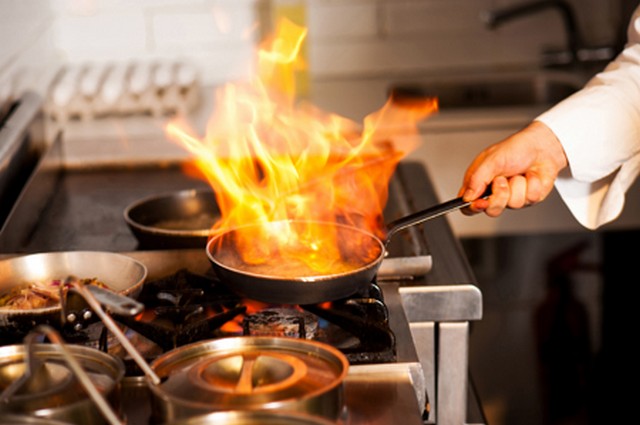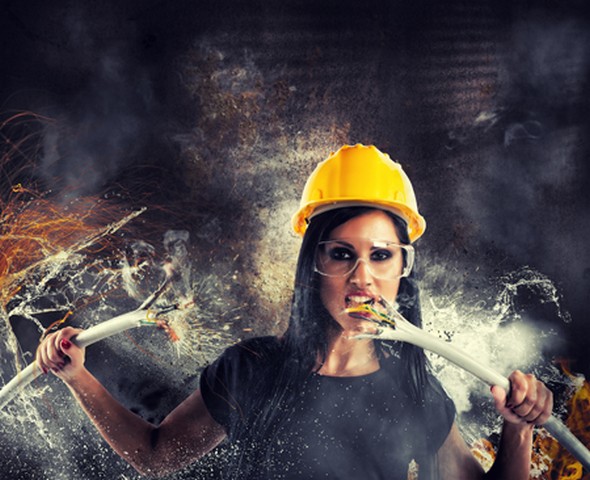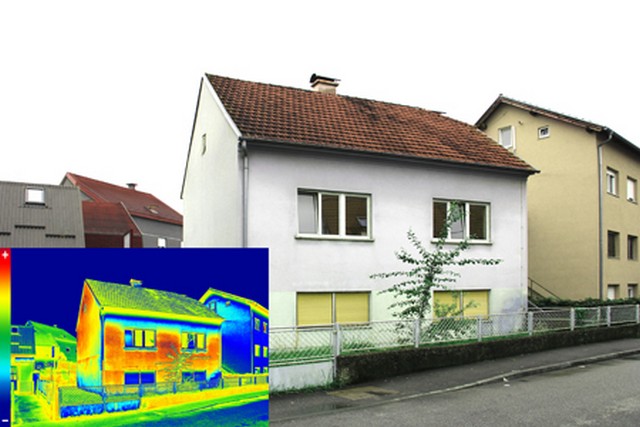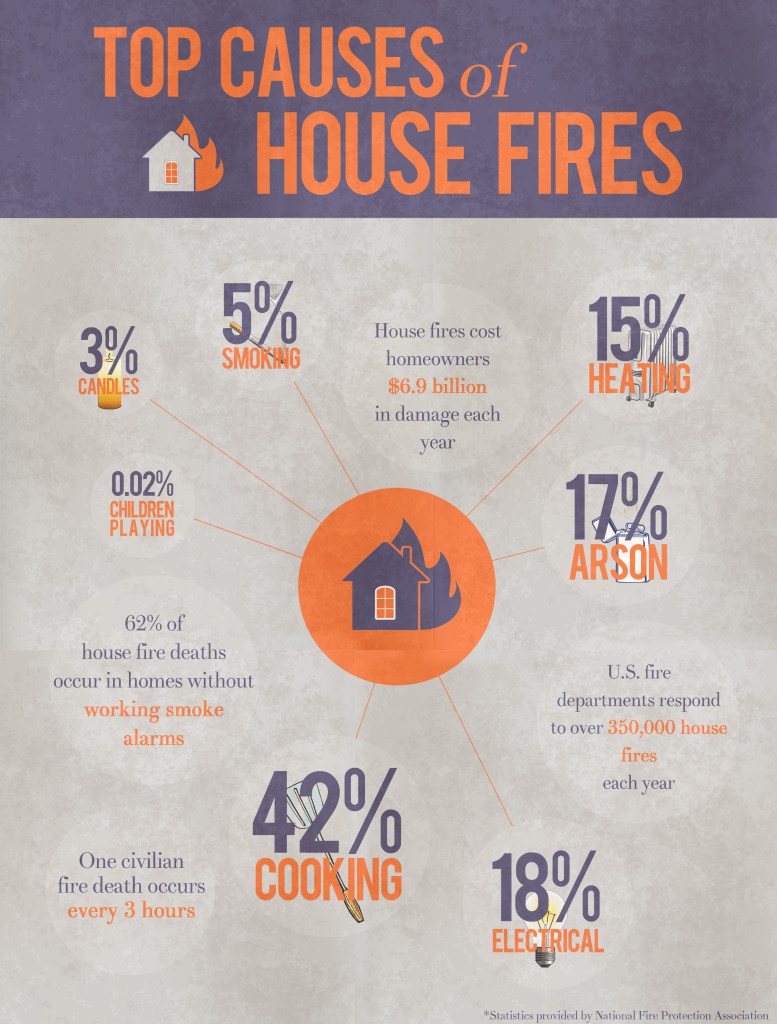What Are The Top Causes Of House Fires?

One of the core services that PuroClean offers to residents in Philadelphia and Southern NJ is fire and smoke restoration.
Our team has helped many home and business owners restore their properties after experiencing a fire or smoke event.
PuroClean has so many satisfied customers because we truly care and empathize with them. In order to help future and current customers, one of our core goals is to provide our customers with knowledge and information.
The purpose of this article is to provide you with current stats on fire and most importantly tips to prevent future fires. We will always be there for you if you need us to restore your home or business after a fire, but we would rather help you prevent a future fire.
Important Fire Stats and Facts!

Statistically speaking, U.S. fire departments responded to 370,000 home structure fires that caused 13,910 civilian injuries, 2,520 civilian deaths, and $6.9 billion in direct damage.
With respect to causes of house fires, here are the stats:
- Cooking: 42%
- Electrical: 18%
- Arson: 17%
- Heating: 15%
- Smoking: 5%
- Candles: 3%
As the statistics show, the top cause of house fires is cooking.
To prevent cooking fires cook with caution. Do not place flammables near your burners and never use water to douse out a fire if you are cooking with oil or grease. Grease fires can spread very quickly. To be safe, keep a fire extinguisher nearby.
The second cause of house fires are caused by electrical problems. Use these 10 tips to prevent electrical fires!
Top 10 Tips To Prevent Electrical Fires!

- Call an electrician to check the fuse box or breaker panel. Ask the electrician to correct any damaged components.
- Call an electrician to inspect the wiring. Replace any old wiring if the electrician suggests you to do so and have him wrap any damaged portions of wiring with electrical tape temporarily.
- Check for broken plugs or switches.
- Do not overload any circuits. Limit the amount of appliances you use and plug only into an appropriate outlet. Note that in most homes, the electrical load on a home is greatest during the evening when family members are consuming electricity using several appliances: cooking; running the dishwasher; watching television in the living room; browsing the internet; listening to the radio; etc.
- Avoid “octopus” connections, do not overload plugs.
- Unplug appliances when not in use.
- Use high quality and high standard electrical products when replacing wires or other components.
- Do not use damaged appliances.
- Install smoke and carbon dioxide alarms where required.
- Do not plug too many appliances into one extension cord. Use only high quality approved extension cords that can handle the load.
In addition to getting the wiring of your home inspected by an electrician, you may also want to consider thermal imaging because it can help identify potential, hidden electrical issues.

Thermal imaging can assist home owners to:
- Identify Moisture Intrusion. Thermal imaging can detect potential moisture or water intrusion behind a wall by detecting the temperature variations behind the wally and identifying the cold spots. Once a cold spot is found, a moisture meter can be used to verify if there is moisture behind the wall. Once the moisture problem is found, it is imperative that it is fixed to prevent further mold growth and poor health. One of the key benefits offered using this method to identify the moisture problem, is the potential savings in repairing the problem. For instance, if a leaky pipe is identified behind a wall, just the portion of drywall adjacent to the area where the leak is will need to be removed so the plumber can properly fix the leak. Identifying the cause of moisture and fixing it will prevent future mold growth that could impact the structural integrity and value of the home, not to mention the potential health impact that mold has.
- Detect Insufficient or Improperly Installed Insulation. Thermal imaging detects hot/cold spots in walls where insulation could have slouched over time, was incorrectly installed, or where insulation was never installed at all. If you are trying to reduce heating costs in the winter and cooling costs in the summer, this is very important to know.
- Identify Electrical Hot Spots. Fires are often started by faulty wiring and electrical components in the home. Thermal imaging can identify electrical hot spots which are caused by loose, damaged, or dirty connections which cause heating issues. When this occurs, over time the connections can degrade causing the circuit breaker to trip or fail and eventually start a fire.
Considering the second highest cause of house fires is electrical issues, this aspect of your home maintenance should be maintained.
Schedule an appointment with your electrician and if you are concerned about possible hidden electrical hot spots, invest in thermal imaging.
Listed below are 25 more fire prevention tips to keep you safe!
Top 25 Fire Prevention Tips!

- Keep a fire extinguisher in your home and make sure your smoke detectors work.
- Have your heating system serviced regularly by a professional.
- Remove the lint from your dryer filter after every use.
- Keep firewood, piles of leaves and trash away from the home.
- Be very careful in any situation where you use an extension cord for extended periods of time.
- Store containers of cooking oil well away from the stove.
- Be sure to properly extinguish smoking materials.
- Check the condition of your home’s electrical system.
- Check the natural gas/LP gas system in your home.
- Check your appliances.
- Be very careful with space heaters.
- Never use extension cords for air conditioners.
- Maintain your fireplace correctly.
- Never store flammable liquids near ignition sources.
- Stay in the kitchen when using the range for cooking.
- Don’t cook when drinking alcohol, using drugs, or very tired.
- Be careful with candles, oil lamps, and other open flame illumination or decorations.
- Use caution with holiday decorations, particularly Christmas trees.
- After using matches, quickly place in or run under water to extinguish any invisible flame or heat source that could cause a fire in the trash can.
- Be careful using a grill on a deck.
- Look into the possibility of installing a lightning protection system in your home if you live in an area where lightning is a frequent problem.
- Consider having a home sprinkler system installed.
- Teach your children not to play with lighters or matches.
- Store only the minimum amount of any combustible material in your home, and keep it in the original, or a UL approved container.
- Never store oily rags, especially rags saturated with mineral spirits, paint thinners, or linseed oil. Under certain conditions, these materials may spontaneously start on fire without any known source.
Got Fire Prevention Questions?

- Get out of your home as quickly as possible, making sure all occupants are alerted and leave also. Contact your fire department.
- Do not use water on an electrical fire. Water will conduct the electricity towards you and cause electrocution.
- Do not use water on a grease fire. The oil will heat the water extremely rapidly, which could cause the water to flash boil into steam, pushing the oil outwards and potentially spreading the fire.
Then call PuroClean, 877-750-7876, so that we can begin the clean up process, implement our recovery plan, and begin restoring your property. If you have further questions, feel free to call or send us an e-mail. Peace of mind is just a phone call away!
Other Articles On Fire Prevention!
- Why We Should Care About Fire Prevention Month
- Fire Prevention Week
- Beware of Fire Chasers!
- Don’t Do These 11 Things If You Have A Kitchen Grease Fire
- After the Fire: The Science of Smoke Odor Removal
Top Causes of House Fires Summary!

#Fire Prevention: 35 Tips! https://t.co/VkuWSQC1uJ PLEASE RETWEET pic.twitter.com/uD8ANF154j
— Harry Allcroft (@PuroCleanPERS) October 3, 2017
